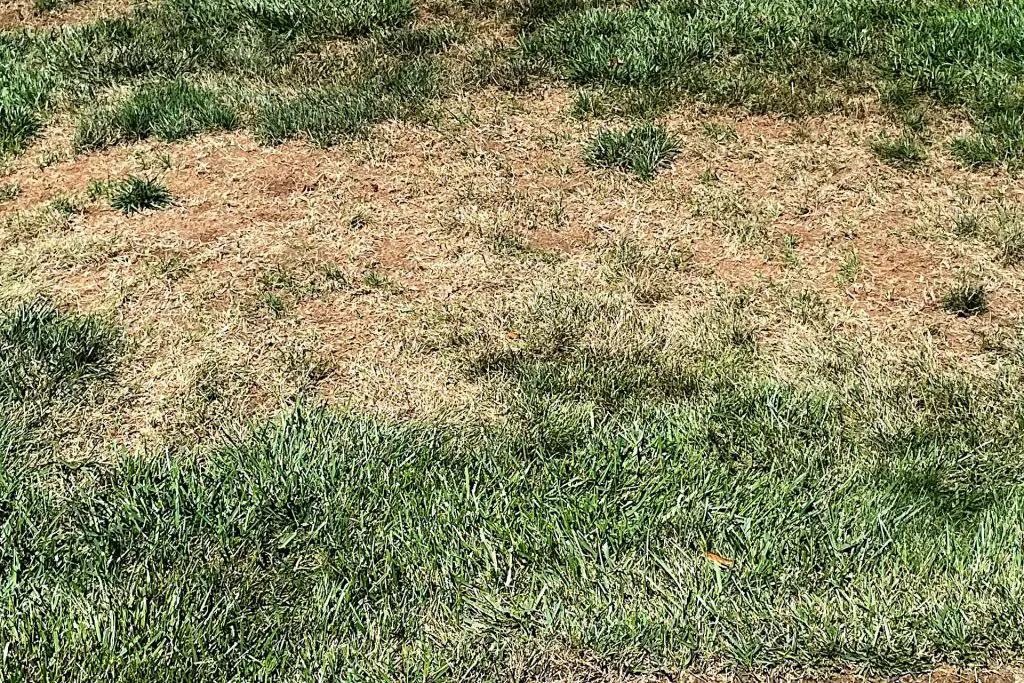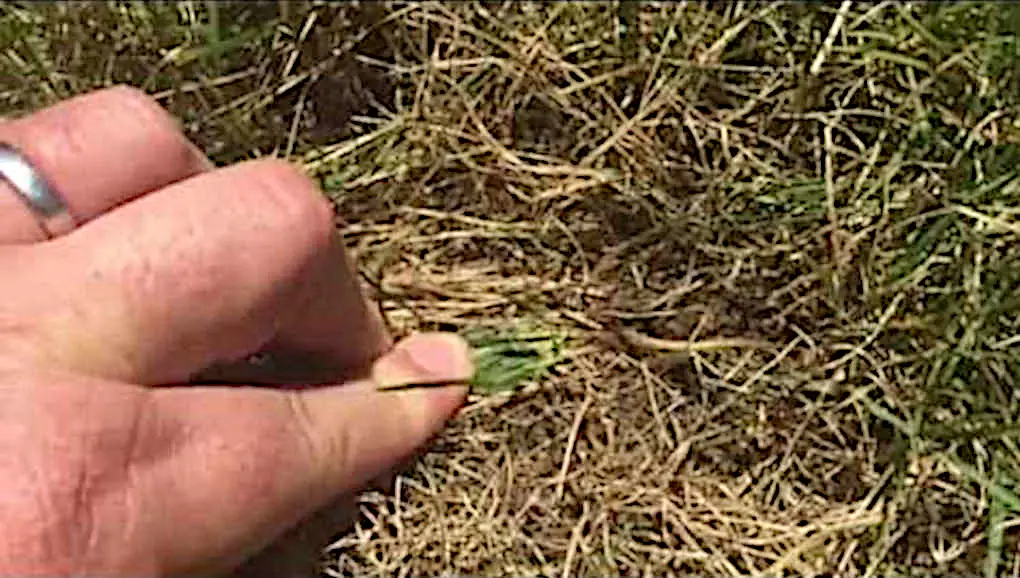Don’t Overlook Chinch Bug Damage: How Do I Know if My Lawn Has Chinch Bugs
- The appearance of small, yellow or brown patches on your lawn is a common symptom of a chinch bug infestation.
- Discoloration or wilting of the grass blades and broken or damaged stems at the base of the grass blades are additional symptoms to look out for.
- Chinch bugs are most active during the warm months of summer and early fall, and it is important to monitor for symptoms during this time and take action before the damage becomes severe.
It can be difficult to try to Identify whether your lawn has fallen victim to a chinch bug infestation. The reason for this is the symptoms of an infestation can also resemble drought stress or disease, causing you to overlook the possibility, which could have devastating consequences.
Below, we will look at and provide a comprehensive guide on the most effective ways in which you can detect chinch bugs, as well as share our experiences. We will also provide detailed information on the timing of chinch bug activity and the best time to treat it.
Symptoms of a Chinch Bug Infestation
| Symptoms | Description |
|---|---|
| Growing point / distortion | Distortion or malformation of the growing point of the plant |
| Grass Blades / abnormal colors | Grass blades/leaves that are discolored or have abnormal color patterns |
| Grass Blades/ abnormal forms | Leaves/grass blades that have abnormal shapes or forms |
| Grass Blades / necrotic areas | Dead or dying areas on the grass blades/leaves |
| Grass Blades/ wilting | Leaves that are drooping or limp due to lack of water |
| Grass Blades / yellowed or dead | Yellowing or death of grass blades/leaves |
| Roots / reduced root system | Reduced or stunted root growth |
| Stems / stunting or rosetting | Shortened or stunted stem growth or abnormal clustering of leaves at the base of the plant |
| Stems / wilt | Wilting or drooping of stems |
| Whole plant / distortion; rosetting | Distorted or malformed growth and abnormal clustering of grass blades at the base of the plant |
| Whole plant / dwarfing | Reduced or stunted growth of the entire plant |
| Whole plant / plant dead; dieback | Death or dieback of the entire plant |
When it comes to identifying a chinch bug infestation, it’s important to pay attention to the specific symptoms that the bugs can cause on your lawn.

Small Yellow or Brown Patches
One of the most common symptoms is the appearance of small, yellow or brown patches on your lawn. These patches can vary in shape and size, but they are often circular or irregular in shape and can range from a few inches to several feet in diameter.
Discoloration or Wilting of The Grass Blades
Another symptom to look out for is discoloration or wilting of the grass blades. The tips of the blades may turn yellow or brown, and the grass may appear dry and brittle. The damage can also resemble drought stress, but unlike drought stress, chinch bug damage will be more severe in sunny areas of your lawn.
Damaged Stems at The Base of The Grass Blades
A third symptom is the presence of broken or damaged stems at the base of the grass blades. This can occur when the bugs feed on the stems, causing them to become brittle and break easily. Additionally, you may notice seedlings dying or leaves turning yellow or brown.
Dead seedlings
If you have a newly seeded lawn area, the failure of apparently healthy seedlings or their discoloration (blades turning yellow or brown) can be another ‘tell-tale’ sign of chinch bugs. Chinch bugs will feed on the newly sprouting blades of grass in the same way they will attack established grass.
Some or All Symptoms?
It’s important to note that not all of these symptoms may be present in every infestation, but if you notice multiple signs on your lawn, it’s likely that you have a chinch bug infestation.
Using a Tin Can to Detect Chinch Bugs
One effective method for detecting chinch bugs on your lawn is to use a tin can or “float test.” This method involves using a metal cylinder that is accessible from both ends or has had both ends cut off. To perform the test:
- Select a spot of grass and insert the metal cylinder 3 inches into the ground.
- Fill the submerged cylinder with water 3/4 of the way to the top, and keep adding water for around 10 minutes.
- Then, agitate the submerged turf to stir up any chinch bugs that may be present.
- The chinch bugs will float to the surface, making them easy to spot.
It’s important to perform the test in several different areas of your lawn, as chinch bugs can be concentrated in certain spots. If you find more than a few chinch bugs in any one spot, it’s likely that you have an infestation.
Verifying Chinch Bug Damage: How to Inspect Your Lawn

An alternative method to verifying is to inspect the area carefully. To do this, you will have to lie down on the grass, carefully separate the blades of grass from each other using your fingers, and inspect. It’s usually possible to notice the small bugs moving about if you look closely enough. However, adult chinch bugs are less than 1/4 inch long, so you may need to use a magnifying glass to see them clearly.
When inspecting, pay attention to any yellow, brown or dying patches of grass, this is a clear indication of chinch bug feeding, also look for small holes in the grass, and check the soil for eggs or nymphs. You can also shake some blades of grass over a white paper or cloth, if chinch bugs are present, they will be visible on the paper or cloth. With this information, you can determine whether or not your lawn has a chinch bug problem and take the necessary steps to control and prevent further damage.
Chinch Bug Infestation Timing
One of the most important signs is the time of year. When it comes to chinch bugs, timing is everything. These pests are most active during the summer and early fall warm months. This is when they are reproducing and feeding on your lawn. It’s important to be aware of the active period of chinch bugs, so you can keep an eye out for symptoms of infestation and take action before the damage becomes severe.
It’s also important to note that chinch bugs can overwinter in the soil and may be present in small numbers even in the cooler months. However, they are most active during the summer and early fall, so this is the best time to monitor your lawn for symptoms and take action.
Our Experience in Detecting Chinch Bugs
Once a chich bug infestation takes hold, the damage to your lawn can be devastating, so early identification is key. One of the problems is that many of the initial symptoms can be attributed to other lawn problems. If you know you have been taking good care of your lawn, you should investigate when you see any of these symptoms.
In addition, if your near neighbors have a chich bug problem or you hear of an infestation in your local area, contact your local Extension Office and ask the extent of the problem. Irrespective, keep a heightened eye out and take necessary preventative measures.
Best Time to Treat a Chinch Bug Infestation
Once you’ve identified a chinch bug infestation, it’s important to take action as soon as possible. The best time to treat the infestation is during the early stages, when fewer bugs are present and the damage is less severe. Waiting until the infestation is well-established can make it more difficult to control and can result in more damage to your lawn.
If you notice symptoms of a chinch bug infestation, read our detailed guide on how to deal with chinch bugs. If you want to prevent further infestations or avoid the problem first place, then our article on preventing chinch bug infestations will help you.
When treating a chinch bug infestation, it’s important to consider the safety and environmental concerns associated with pesticides. Many pesticides can be harmful to humans and animals if they are not used properly. Additionally, pesticides can have an impact on the environment, particularly on beneficial insects and other wildlife.
Choosing a pesticide that is effective against chinch bugs and safe to use on your lawn is important. Always read and follow the manufacturer’s instructions carefully, and avoid over-applying the pesticide. It’s also important to consider natural and organic alternatives, such as beneficial insects or nematodes, which can help to control chinch bugs without the use of pesticides.
In any case, it’s always best to consult with a professional or a local extension office to get the best advice on treating chinch bugs in your location. They can recommend the best products and methods based on the local climate, soil, and other factors.
